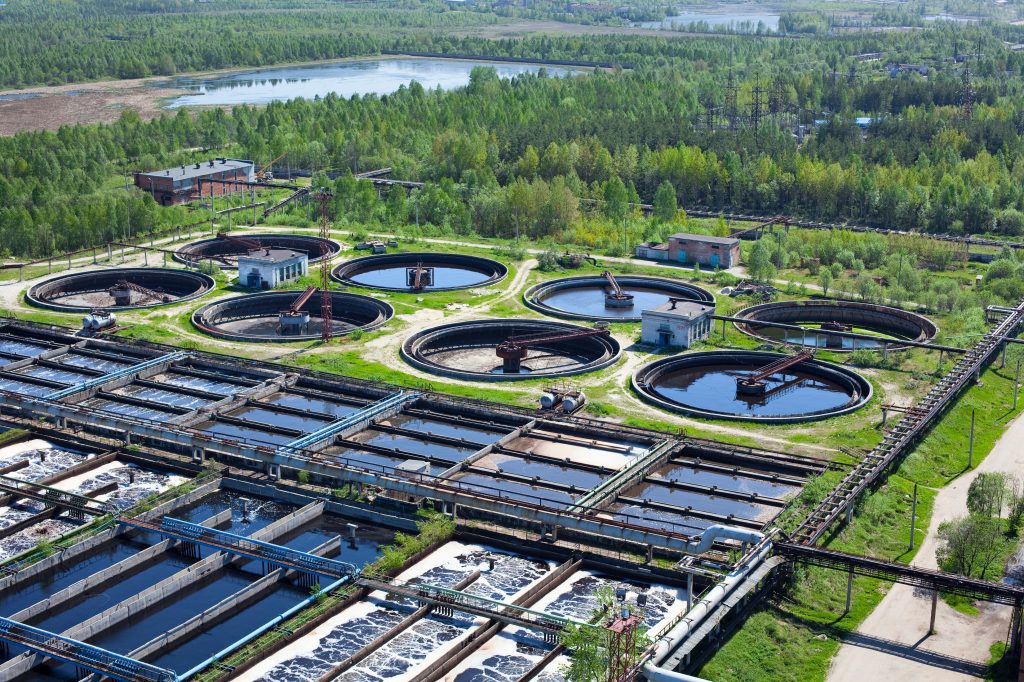Factories rely on water treatment polymer to improve filtration efficiency.
Factories rely on water treatment polymer to improve filtration efficiency.
Blog Article
Check Out Just How Water Therapy Polymer Features in Reliable Wastewater Treatment Systems
The integration of water treatment polymers into wastewater treatment systems stands for a considerable improvement in improving operational performance. Recognizing the particular types of polymers and their applications can disclose deeper insights right into maximizing therapy processes.
Summary of Water Treatment Polymers
The efficiency of wastewater management depends upon the application of different treatment representatives, among which water therapy polymers play an essential role. These artificial or natural polymers are made to improve the effectiveness of physical and chemical processes in wastewater therapy systems. Their primary feature is to help with the gathering of suspended fragments, eventually improving the general quality of treated water.
Water therapy polymers can be categorized right into a number of groups, including flocculants, coagulants, and dispersants. Flocculants, as an example, promote the formation of bigger accumulations, or flocs, by linking smaller sized bits with each other. Coagulants counteract the costs of put on hold fragments, allowing them to come together and settle better. Dispersants, on the various other hand, are used to stabilize bits in suspension, stopping them from agglomerating.
The application of these polymers not just boosts the removal of pollutants however additionally enhances the functional performance of therapy plants. Additionally, the selection of suitable water therapy polymers is critical, as their effectiveness can vary based on elements such as water chemistry, temperature, and turbidity levels. Generally, water therapy polymers are crucial parts in modern wastewater management techniques, contributing to cleaner water and sustainable environmental practices.
Systems of Coagulation and Flocculation
Coagulation and flocculation are basic processes in wastewater treatment that personify the concepts of bit interaction and gathering. These systems are important for removing put on hold solids, colloids, and various other pollutants from water. Coagulation involves the destabilization of put on hold bits, generally achieved via the addition of coagulants such as steel salts. These coagulants reduce the effects of the electrostatic charges that maintain bits apart, promoting first aggregation.
Following coagulation, flocculation takes place, defined by the mild mixing of water to urge the formation of bigger aggregates, or flocs. Throughout this phase, polymers play a substantial function by linking between fragments, improving the development of these larger accumulations. The physical and chemical interactions throughout flocculation lead to a boosted size and density of the fragments, facilitating their succeeding removal via sedimentation or filtering.
The performance of coagulation and flocculation processes is affected by various variables, including pH, temperature level, and the nature of the contaminants present. Recognizing these mechanisms enables the optimization of wastewater treatment systems, resulting in enhanced elimination efficiencies and overall water top quality. The mindful selection and application of coagulants and flocculants are necessary for effective wastewater administration.
Sorts Of Water Treatment Polymers
Often used in wastewater treatment, water therapy polymers are important for improving the efficiency of coagulation and flocculation processes. These polymers can be generally categorized right into 3 primary types: anionic, cationic, and non-ionic.
Anionic polymers, which carry a negative cost, are specifically reliable in dealing with wastewater with positively charged contaminants. Alternatively, cationic polymers have a favorable charge and are frequently used in applications where adversely billed bits dominate, such great site as in particular industrial effluents.
Non-ionic polymers, lacking a cost, offer as flexible agents that can boost the efficiency of both anionic and cationic polymers. Their key duty includes enhancing the viscosity of the wastewater, thus enhancing the general retention time of the flocs in the therapy system.
Comprehending the distinct characteristics of these kinds of water therapy polymers permits for the optimization of wastewater treatment procedures, ultimately bring about improved removal performances and enhanced water high quality.
Applications in Wastewater Therapy

In municipal wastewater therapy plants, water therapy polymers help in reducing the volume of sludge generated during the treatment procedure. water treatment polymer. This decrease not just maximizes operational efficiency however likewise lessens disposal additional resources prices related to sludge management. Additionally, polymers contribute in treating commercial effluents, where they help in the elimination of certain impurities such as hefty steels and natural toxins, ensuring compliance with environmental regulations

Furthermore, water therapy polymers are used in the enhancement of biofiltration systems, where they improve microbial activity and total therapy effectiveness. Their function in membrane procedures, such as reverse osmosis, additionally can not be ignored, as they add to membrane fouling control and prolong the life-span of purification systems. With these diverse applications, water therapy polymers are crucial for attaining reliable and sustainable wastewater management.

Benefits of Using Polymers
Making use of water treatment polymers in wastewater systems supplies many benefits that dramatically improve treatment effectiveness and overall functional performance. To start with, these polymers function as effective coagulants and flocculants, advertising the aggregation of put on hold solids and facilitating their elimination. This procedure causes clearer effluent and reduces the burden on downstream therapy stages.
In addition, polymers enhance the dewatering procedure by improving the sedimentation characteristics of sludge. This leads to reduced quantity and weight of waste product, eventually reducing disposal costs. Their capability to operate across differing pH levels and temperature levels guarantees convenience in different wastewater atmospheres.
Polymers additionally contribute to the stablizing of organic processes by supplying nutrients and keeping optimal problems for microbial growth - water treatment polymer. This boosted microbial activity aids in the break down of natural matter, boosting overall therapy efficiency
Moreover, the use of polymers can bring about reduced chemical usage, minimizing functional costs and environmental impact. By optimizing the treatment process and improving sludge administration, water treatment polymers play a critical duty in advertising lasting wastewater monitoring techniques, straightening with governing criteria and ecological goals.
Final Thought
In conclusion, water therapy polymers are necessary for improving the efficiency of wastewater therapy systems. Their capability to facilitate coagulation and flocculation procedures leads to improved sedimentation and reduced sludge quantity, thus optimizing therapy web link performance.
Report this page